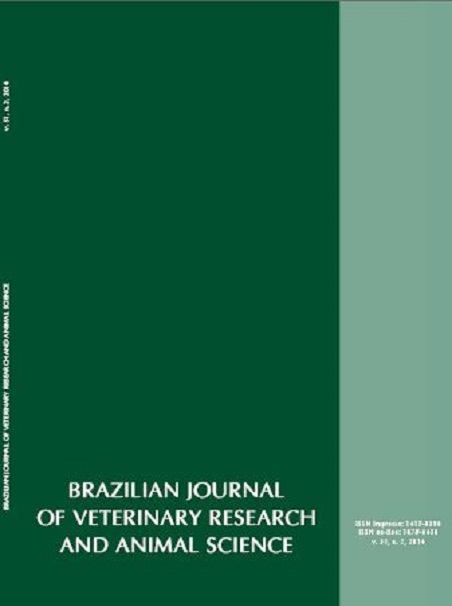Clinical and biochemical parameters evaluation of pregnant and non-pregnant ewes from pantaneiro genetic group
DOI:
https://doi.org/10.11606/issn.1678-4456.v51i2p111-117Keywords:
metabolic profile, peripartum, pantaneiro genetic groupAbstract
This study evaluated the clinical biochemical profile of pregnant and non-pregnant ewes from pantaneiro genetic group. Twenty ewes were used, divided into two groups, PREGNANT (n = 13) and NON-PREGNANT (n = 7). Blood samples were collected weekly from five prepartum weeks to eight postpartum weeks from pregnant ewes, and over eight consecutive weeks from NON-PREGNANT ewes, corresponding to the period of postpartum at PREGNANT ones. Analyses were performed to determine the concentrations of glucose, albumin, phosphorus, beta-hydroxybutyrate (BHB), aspartate aminotrasferase (AST), urea, and cholesterol. During prepartum, the urea concentration was lower (27,82 mg/dL ±1,64 - P < 0,0001) and AST enzyme level was higher(80,93 U/L ±2,44 - P < 0,0001). During calving, increased concentrations of glucose (86,17mg/dL ±2,93 - P < 0,0001) were observed in relation to the other periods; while, during postpartum, phosphorus was reduced (4,79 mg/dL ±0,16- P < 0,0111) and BHB increased (2,37 mmol/L ±0,16- P < 0,0001). Albumin concentrations were lower in NON-PREGNANT ewes 2,22 g/dL ±0,06- P < 0,0001). The levels of the metabolites analyzed are similar to those found in other sheep breeds. The metabolic changes occur around parturition; therefore, for the prevention of metabolic disorders,it is important to have reference levels aiming to control biochemical parameters during the peripartum of pantaneiras ewes.
Downloads
Downloads
Published
Issue
Section
License
The journal content is authorized under the Creative Commons BY-NC-SA license (summary of the license: https://





